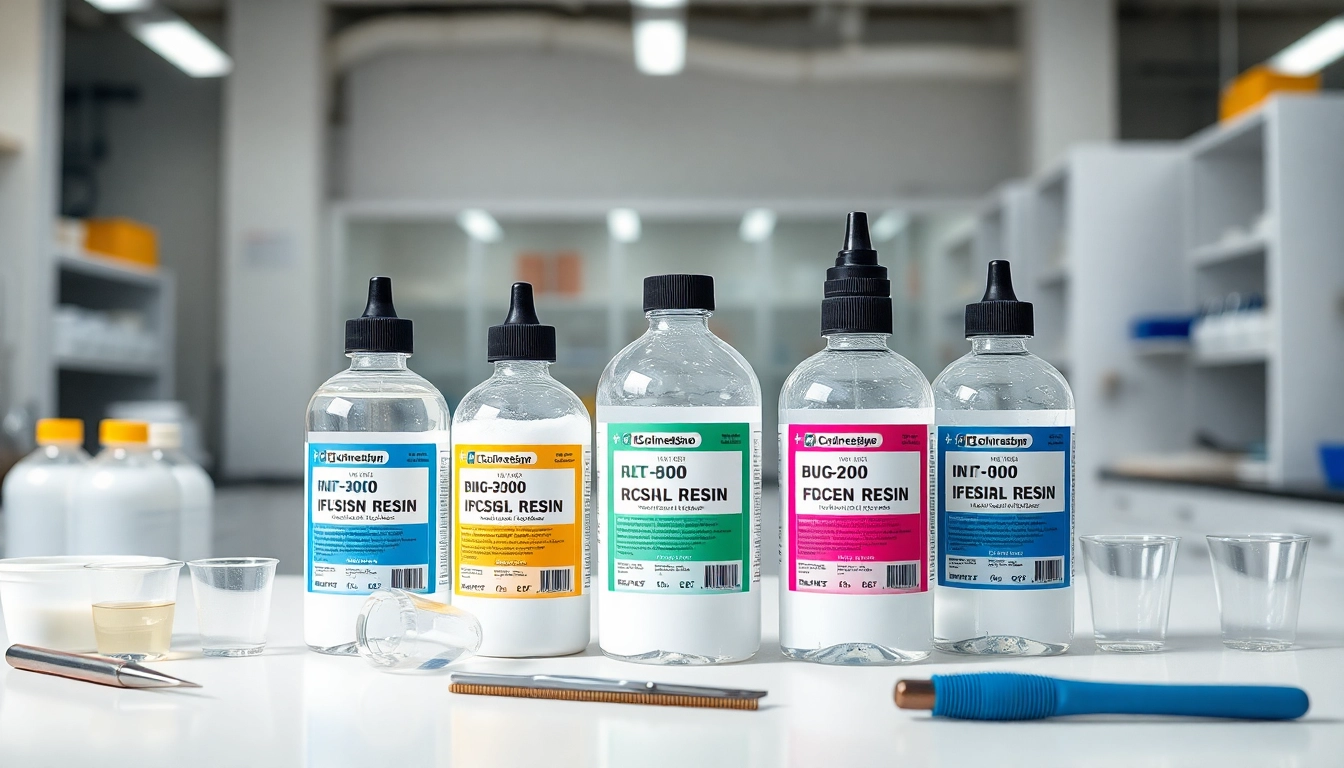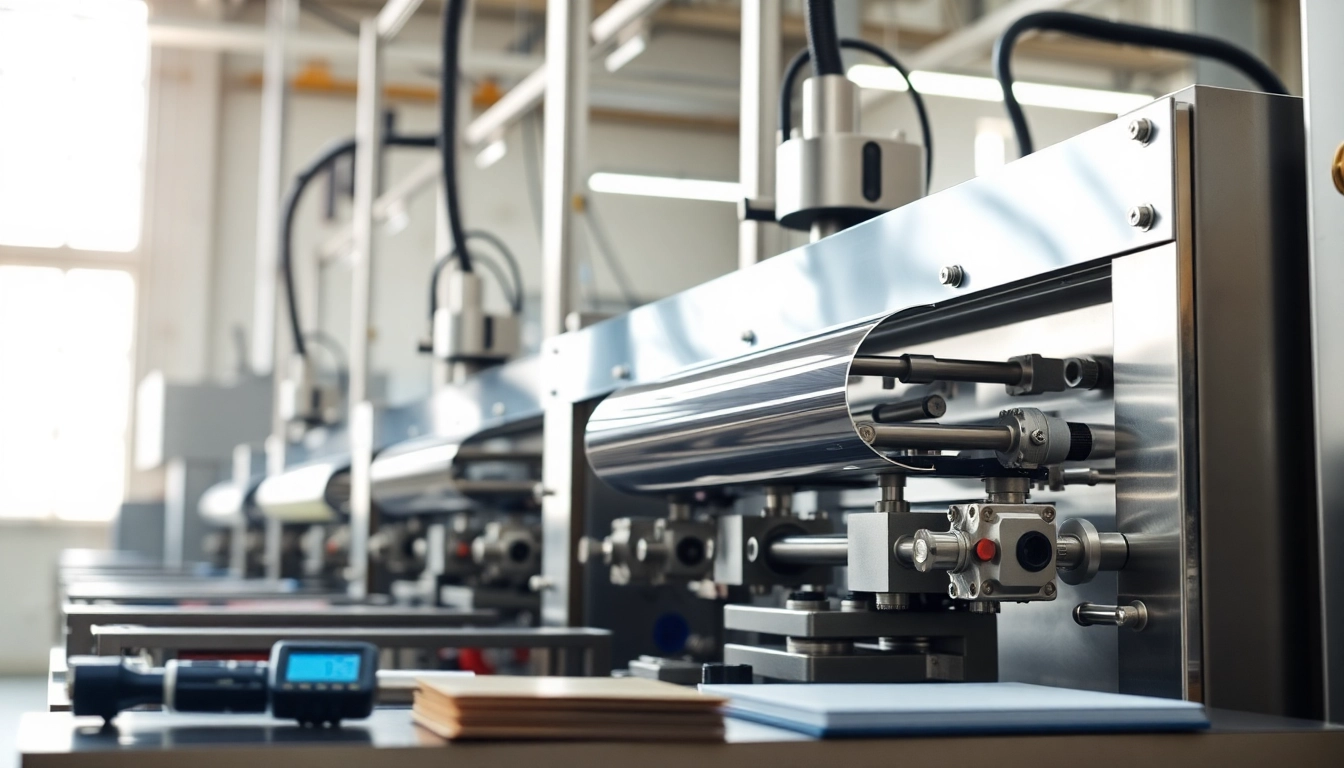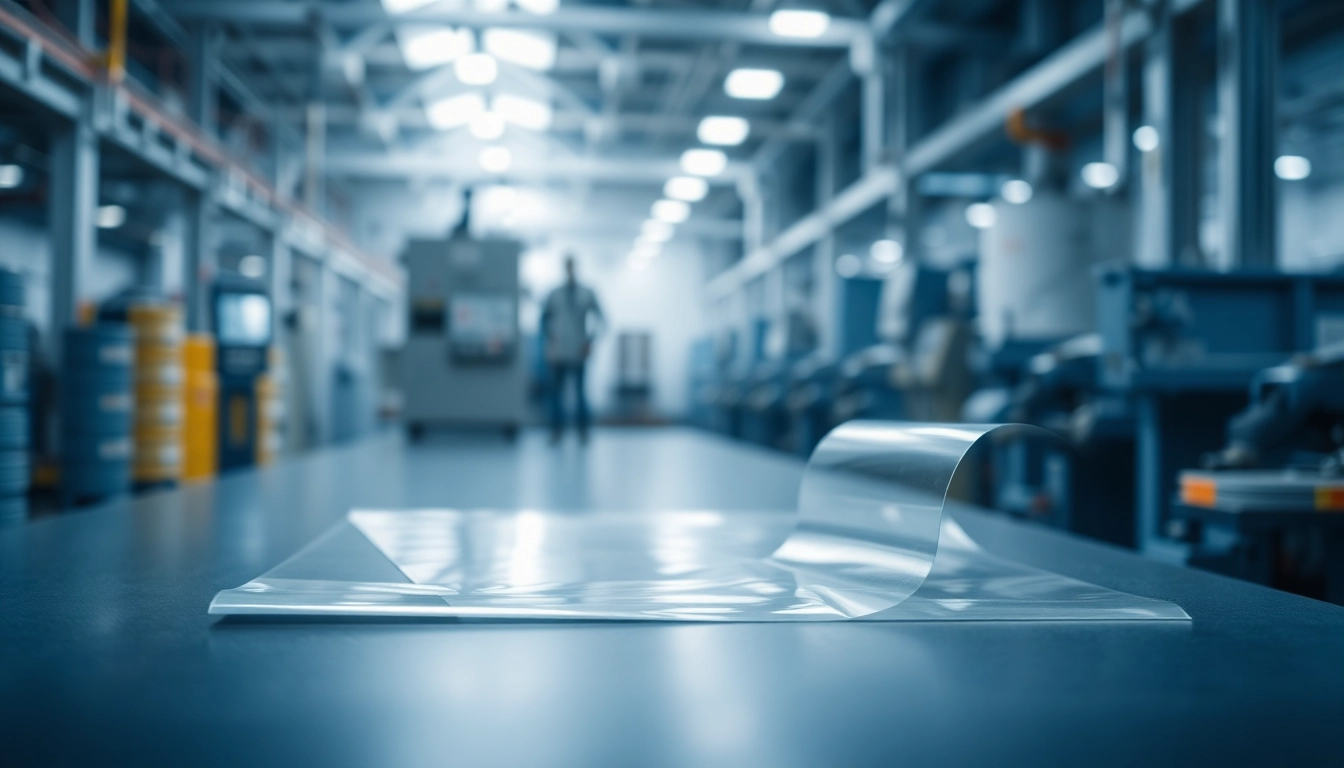Optimizing Your Processes with Quality Infusion Resins for Advanced Composite Applications
Understanding Infusion Resins
What Are Infusion Resins?
Infusion resins are specialized materials used in composite manufacturing, primarily designed for processes such as vacuum infusion. These low-viscosity resins penetrate fiber reinforcements effectively, ensuring a thorough and uniform distribution within the matrix. Infusion resins enhance the performance characteristics of composite parts, offering attributes such as strength, clarity, and resistance to environmental factors. The materials typically consist of epoxy or polyester compounds, chosen for their optimal curing properties and structural integrity.
The unique formula of infusion resins allows for controlled flow during the infusion process, which is crucial for minimizing voids and ensuring consistent wet-out of the fiber reinforcements. By utilizing a vacuum to draw the resin into a dry fiber layup, the process creates a dense composite with superior mechanical properties. For more detailed information, refer to this comprehensive resource on infusion resins that highlights their specific advantages and applications.
Applications of Infusion Resins
Infusion resins have diverse applications across various industries:
1. Aerospace: In aerospace, infusion resins are utilized for manufacturing composite structures such as wings, fuselage components, and interior parts. Their strength-to-weight ratio is critical for maintaining performance and fuel efficiency.
2. Marine: The marine industry employs infusion resins to build strong and lightweight hulls for boats and yachts. The resilience against water and environmental degradation makes infusion resins a preferred choice.
3. Automotive: In automotive applications, infusion resins help create lightweight yet durable components, contributing to better fuel efficiency and performance.
4. Wind Energy: Infusion resins are essential in manufacturing turbine blades, where strength and durability are paramount to withstand harsh operational environments.
5. Sports Equipment: High-performance sports equipment, including bicycles and golf clubs, often incorporate composites made with infusion resins to enhance strength while minimizing weight.
Differences Between Infusion Resins and Other Resins
While many types of resins are available for various applications, infusion resins stand out due to their unique properties and benefits. The main differences include:
– Viscosity: Infusion resins are typically low-viscosity, allowing them to flow easily through dry fibers under vacuum pressure. This is unlike other resins, such as general-purpose epoxies that may not adapt well to infusion processes.
– Curing Characteristics: Infusion resins are designed to cure at room temperature or slightly elevated temperatures, ensuring they are user-friendly while still providing robust mechanical properties.
– Application Technique: Unlike traditional hand layup techniques where resin is brushed or rolled, infusion resins require a vacuum infusion setup, which allows for more controlled and efficient resin application.
– Final Product Quality: Although other resins can produce solid composites, infusion resins often yield parts with superior integrity and less likelihood of defects such as air pockets or uneven resin distribution.
Benefits of Using Infusion Resins
Enhanced Strength and Durability
One of the primary advantages of infusion resins is their ability to create high-strength, durable composites. The infusion process ensures that fibers are fully saturated with resin, which significantly enhances the mechanical properties of the final product. The resultant composites exhibit:
– Improved tensile and flexural strength, allowing them to withstand greater loads without deformation.
– Higher impact resistance, making them less susceptible to damage from external forces.
Applications in industries such as aerospace and marine benefit immensely from these properties where structural integrity is non-negotiable.
Improved Flow Characteristics
Infusion resins offer superior flow properties compared to traditional resins. The low viscosity allows the resin to move swiftly through the fiber reinforcement, minimizing the time taken for the infusion process. This includes:
– Rapid wet-out: Ensures faster infusion cycles, improving overall production efficiency.
– Uniform distribution: Reduces the risk of dry spots or areas with insufficient resin coverage, enhancing the performance of the composite.
The advanced flow dynamics make it easier to mold complex shapes and achieve intricate designs, which are often challenging with other resin types.
Reduced Volatile Organic Compounds
With growing concerns over environmental pollution, the use of infusion resins has become synonymous with sustainability. Specifically, these resins are formulated to emit significantly lower levels of volatile organic compounds (VOCs) during the curing process. Benefits include:
– Improved workplace health: Reduced VOCs contribute to better indoor air quality, protecting workers from potentially harmful fumes.
– Environmental compliance: Many infusion resins meet stringent regulations regarding emissions, making them suitable for eco-conscious manufacturers.
This emphasis on sustainability makes infusion resins an appealing choice for industries looking to minimize their ecological footprint.
Choosing the Right Infusion Resins
Factors to Consider When Selecting Infusion Resins
Choosing the appropriate infusion resin for a specific application involves evaluating various factors:
– Application requirements: Define the mechanical properties necessary for the final product. For example, it might be important to select a resin with high tensile strength for aerospace applications.
– Curing time: Depending on the manufacturing timeline, consider the resin’s pot life and curing speed to ensure efficient production.
– Temperature resistance: If the end product will be exposed to high-temperature environments, selecting a resin with superior thermal stability is critical.
– Environmental factors: Assess whether the resin must conform to specific environmental regulations regarding VOC emissions or chemical resistance.
Comparing Different Types of Infusion Resins
Different formulations of infusion resins serve varied applications, offering unique properties. Common types include:
1. Epoxy infusion resins: Known for their excellent mechanical properties and chemical resistance, epoxy resins often provide the best performance for high-stress applications.
2. Polyester infusion resins: Typically more cost-effective than epoxies, polyester resins can be ideal for less critical applications, although they may offer lower strength and susceptibility to moisture.
3. Vinyl ester resins: These resins offer improved strength and resistance to corrosion, and, like polyesters, tend to be less expensive than epoxies while delivering moderate performance.
Each type has specific characteristics and applications, advising a thorough evaluation before selection.
Understanding Viscosity and Its Impact
Viscosity is a crucial factor when selecting infusion resins since it directly affects the infusion process and final product quality.
– Low Viscosity Resins: Low viscosity resins are essential for efficient wet-out of the fiber matrix, ensuring thorough saturation without trapping air pockets. The speed at which a resin flows into the layup significantly influences the infusion times.
– High Viscosity Resins: While high viscosity resins may be advantageous for certain applications where slower pull-through is necessary, they carry the risk of incomplete wet-out in complex fiber structures, which could lead to product failures.
Always gauge the application’s complexity against the resin’s flow characteristics to optimize performance.
Best Practices for Using Infusion Resins
Preparation for Infusion Processes
Successful infusion starts with thorough preparation:
1. Core Configuration: Ensure the fiber or core material is correctly laid out in the mold, avoiding gaps that might cause failures.
2. Vacuum Setup: Accurately position the vacuum lines and components to ensure a consistent pull and minimize the possibility of air leakage.
3. Resin Mixing: Follow manufacturer guidelines precisely regarding mixing ratios and times, ensuring even distribution of hardeners or catalysts.
4. Testing: Conduct tests on a smaller scale to validate the process before full-scale implementation.
Techniques for Optimal Resin Application
To achieve maximum effectiveness in the infusion process, the following strategies should be employed:
– Use of Flow Media: Different flow media, such as perforated films or mesh, help promote even distribution of the resin, enhancing the wet-out process.
– Controlled Infusion Rates: Monitor and control the rate at which resin is introduced to mitigate excessive pressure, allowing for better penetration.
– Utilizing Vacuum Pressure: Maintaining optimal vacuum levels is critical for preventing the inclusion of air pockets, which could compromise the structural integrity.
By applying these best practices, manufacturers can enhance the performance and reliability of their composite components significantly.
Common Challenges and Solutions
Despite the benefits, challenges may arise during the use of infusion resins. Addressing these effectively can lead to improved outcomes:
– Incomplete Wet-Out: Often the result of high viscosity or rapid infusion rates. Solutions include optimizing resin viscosity and infusion techniques to enhance penetration.
– Voids and Bubbles: Can occur when air is trapped in the fibers. Using vacuum techniques correctly and ensuring impeccable layup practices can help mitigate this issue.
– Curing Issues: Factors such as ambient temperature and humidity impact curing. Adjusting resin types for specific conditions or implementing controlled environments may resolve such issues.
Continuous monitoring and process refinement are crucial to overcoming these challenges.
Future Trends in Infusion Resins
Innovations in Resin Technology
The infusion resin industry constantly evolves, focusing on enhancing resin formulations and infusion techniques. Key trends include:
– Smart Resins: New materials embedded with sensors that can monitor structural integrity during use are in development, promising real-time feedback for enhanced safety.
– Bio-based Resins: The push towards sustainable materials has spurred interest in bio-derived resins that balance performance while minimizing environmental impacts.
– Hybrid Systems: Combining traditional and advanced infusion methods could yield greater efficiencies and product characteristics, broadening the scope of applications for infusion resins.
As technology advances, the capabilities of infusion resins will continue to evolve, offering producers better solutions for modern challenges.
Sustainable Practices in Resin Production
The focus on reduced environmental impact has led manufacturers to explore sustainable practices in resin production. This includes:
– Recyclable Materials: Research is ongoing into recyclable resin systems, allowing for the re-processing of composites instead of sending them to landfills.
– Eco-friendly Curing Agents: The industry is developing curing agents that offer lower toxicity and environmental impact, aligning the infusion resin production process with global sustainability goals.
– Reducing Waste: Improved processes are being designed to minimize waste generation during both production and application phases.
By adopting sustainable practices, manufacturers can position themselves as leaders in the infusion resin market while meeting eco-conscious demands from consumers.
The Role of Infusion Resins in Composite Manufacturing
As the demand for advanced materials continues to grow in various industries, infusion resins are expected to play a pivotal role in the future of composite manufacturing. Their ability to create high-strength, lightweight components will be vital for sectors striving for efficiency, performance, and sustainability.
Continuous innovation in resin formulations and applications ensures that infusion resins will remain at the forefront of composite technology, pushing the boundaries of what is possible in advanced manufacturing.














Post Comment